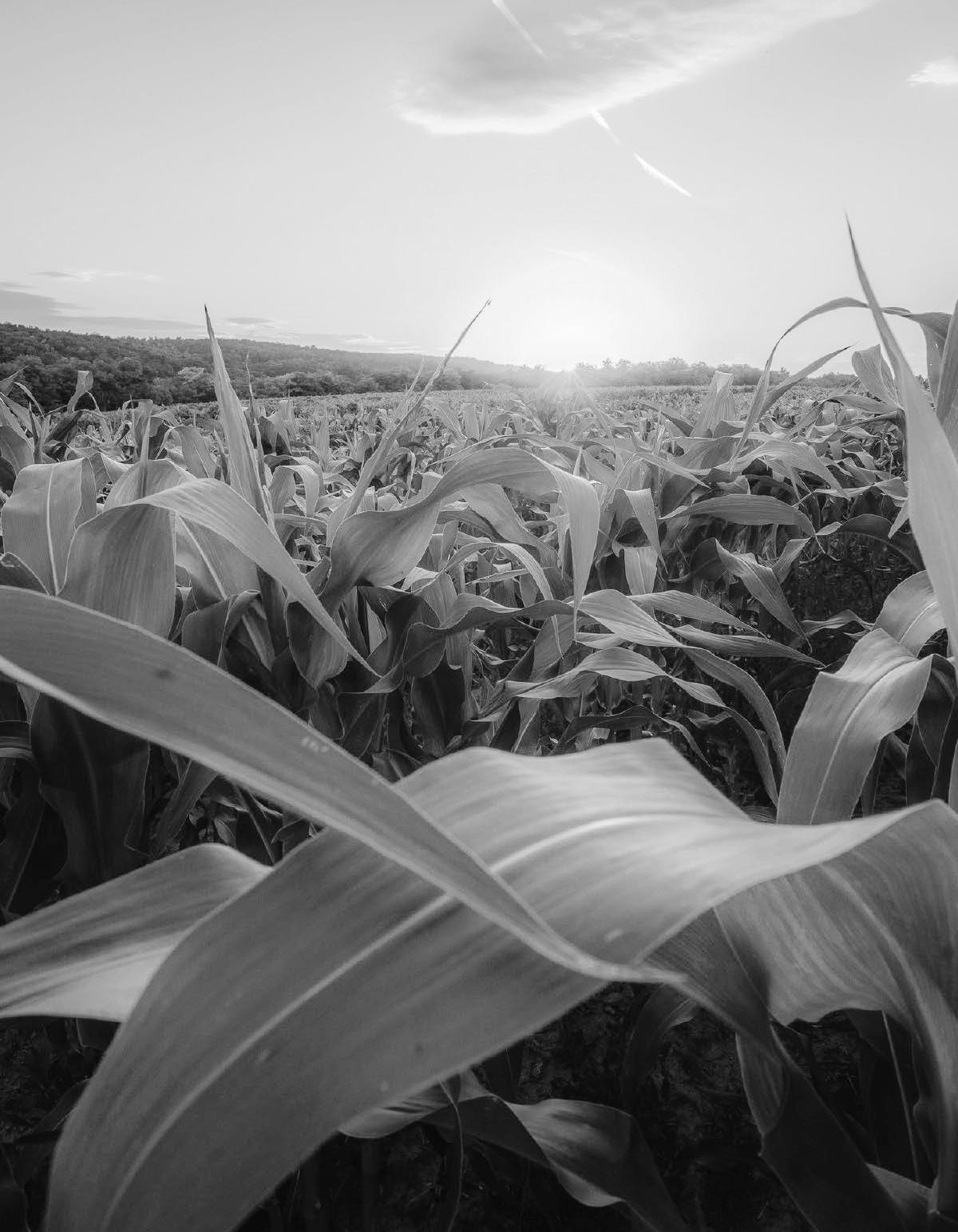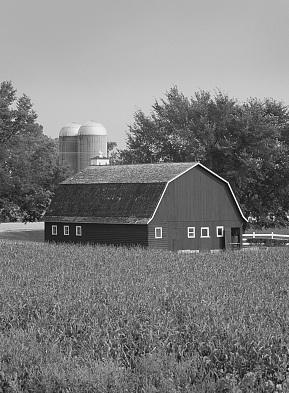Countyfairsare back on their feet after apandemicpunch,and that’sgoodnewsfor thefarmPAGEcommunity


Countyfairsare back on their feet after apandemicpunch,and that’sgoodnewsfor thefarmPAGEcommunity



With a theme of “Let’s Have Fun,” the 2023 IAAF convention featured guest speakers, roundtable discussions and a trade show, with vendors showing off a variety of services and products, including entertainment options ranging from monster trucks to a dinosaur park and a variety of musical acts.
Hardesty said the focus for the IAAF and its members remains on family.
BY JEANNINE OTTO AgriNews PublicationsSPRINGFIELD — Illinois county fair boards are focused on fun — and funds — in the 2023 fair year.
“Illinois county fairs are back,” said Jill Hardesty, president of the Illinois Association of Agricultural Fairs and secretary of the Fisher Community Fair.
Hardesty presided over the 2023 IAAF convention and annual meeting in January that saw fair boards from across the state gather in Springfield to talk about the past year and the year ahead for their fairs.
“I think the mood is very upbeat. Everybody across the state had record attendance this past fair season. We get calls and emails about how wonderful our fairs were. We just have to focus on that, on the positivity and fix the negative things,” she said.
WORK HARD FOR THIS. WE CAN HELP PROTECT IT, FOR TODAY AND FOR TOMORROW.
“North to south, east to west, we’re all one big family and that’s what we try to do here at the convention: everybody as one and we need to do everything for everybody, not just one certain area,” she said.
for fairs is insurance.
“Insurance is always a big one. We spend probably three-quarters of our rehab money on insurance. Because of that, for many fairs, there’s no money for paint or to fix a building up. Our fair is small, so that takes a big chunk out of our bottom line,” Hardesty said.
Funding from the state has decreased, but Hardesty said the IAAF has a legislative liaison in Springfield who works to keep the association’s name and the issue of funding fairs front and center for state lawmakers.

Hardesty
With many fairs still recovering from cancellations due to the COVID-19 pandemic, Hardesty said that one area fair boards are focusing on is expenses.
“Everybody has seen their expenses increase. Our expenses have just skyrocketed. The toilet paper at our fair — how much can toilet paper cost? But it adds up,” she said.
“Because of that, we just have to keep reminding everybody that, hey, your expenses are going to be this much, so you have to watch your income and your expenses.”
Another expense that has continued to increase
“That person is in Springfield every day, helping us as an association, making those contacts so state lawmakers know we are here and so they don’t forget about us,” she said. Hardesty said fairgoers in 2023 can look forward to the traditional fair favorites, as well as new additions to many fair schedules.
“I think a lot of fairs are jumping on the concert bandwagon. We have a lot of good talent agencies out there and they are helping fairs that haven’t yet had the opportunity to get into the market and bring something different to their fairs, whether it be gospel or country or rock or some of the tribute shows,” she said.

County fairs are back on their feet after a pandemic punch, but the president of a statewide fair group says making sure they continue that comeback is everybody’s job: from farmers to FFA members, fair boards to fair-goers, and fundraisers to families
FAIRS cont’d from page 14
“I think concerts are going to be a big thing this year. Motorsports continue to be a big draw at fairs. Tractor pulls, demolition derbies, events like that.”



Another challenge for fair boards is to attract and keep young people involved, not only in the fairs themselves, but in membership on fair boards and as volunteers.
Hardesty said one way that the Fisher Community Fair has addressed the issue is to create a junior fair board, made up of FFA members and ag students from the local high school.

“They are an integral part of our fair. They are our legs, for the older members of the fair board. They do anything we want them to do. If we ask them to go clean stalls, they grab their pitchforks. If we want them to help take down a stage, they are right there working on it,” she said.
The junior fair board members also are consulted when it comes to fair attractions designed for young people.
“We’ll say, hey, you youngsters, what do you think? Will a DJ in a building work? Will the kids, the teenagers, come to that? And sometimes they say yes and sometimes they say no, which is OK,” Hardesty said. “Why should we spend money on something like that when they don’t think it will work?”
Hardesty urged people to get out and not only attend their local and community fairs, but volunteer, too.
“Please go attend your local county fairs. And just ask them and go help out, too. You can help out one hour or you can help out for 10 hours. Any help is appreciated and you’ll be helping your community out, as well,” she said.



Jeannine Otto can be reached at 815-410-2258, or jotto@shawmedia.com. Follow her on Twitter at: @AgNews_Otto.












Nelson discussed the outside forces, from environmental groups to animal rights groups, trying to influence farming and food production.


 JEANNINE OTTO | AgriNews Publications
JEANNINE OTTO | AgriNews Publications

SPRINGFIELD — In the state capitol, just a few miles from his former office as director of the Illinois Department of Agriculture, and from the state capitol building where he once strolled as president of Illinois Farm Bureau, Philip Nelson returned to the podium to speak to an ag audience.
“This is almost like homecoming,” Nelson said to the members of the Illinois Association of Agricultural Fairs gathered for their annual convention Jan. 20-22.

Nelson, who operates a grain and livestock farm near Seneca in La Salle County, highlighted his own experience with county fairs.
“I feel like I’m a product of the county fair association. Our family exhibited livestock for almost four decades at county fairs and state fairs. I know a number of you, what you stand for, what you believe in — and congratulations, you all deserve a nice round of applause for that,” he said.


“I’ve had the opportunity to be part of five farm bill discussions, to fly into our nation’s capitol and testify before the House and Senate ag committees. It’s a unique privilege to do that on behalf of agriculture,” he said.
“You look around those conference rooms, and as we begin a new conference discussion for the new farm bill, you see the likes of Farm Bureau and corn and soybean national farmers’ organizations — they’re all there.
“You also see the people who don’t have attachment to agriculture there: the League of Women Voters, the People for the Ethical Treatment of Animals, the Animal Liberation Front, just to name a few.” Illinois county and community fairs are a way for farmers and others involved in the agriculture industry to continue to tell their farm stories and the story of U.S. agriculture to non-farmers.
“That is why it is even more important for this organization to help tell that story. And you do it well at your county fairs, whether it’s the barnyard zoos, the petting zoos, the barn tours, in bridging that gap between the rural and the urban people who don’t understand what we do and how we do it,” Nelson said.
He challenged his audience to dare to be different.
“We have to keep on dreaming. I know some of you are scratching your heads and going — what does that have to do with being successful in what we do? Dreams are important,” he said.
“Dreams are nothing more than creative thinking. If you look back at this industry of agriculture and look at the creativity we have had.”
Nelson went on to list achievements including the McCormick reaper, John Deere inventing the steel plow and Henry Ford inventing a plastic car, made from soybeans, in 1941.
“That’s creativity. That’s dreaming to have a brighter future than what we have today and the same can be said for each and every one of us,” he said.


Nelson also urged the members of the county fair boards in the audience to be the people who make things happen.
“There are three groups of people in agriculture today. There are those who make things happen. There are those who watch things happen. And the third group wonders what happened,” he said.
“If we’re going to be successful in telling agriculture’s story and making a difference and daring to be a little different, we have to be the people who make things happen.”
Jeannine Otto can be reached at 815-410-2258, or jotto@ shawmedia.com. Follow her on Twitter at: @AgNews_Otto.
a great
for
• Technology reduced the need for farm workers by 20-60%.

• Road and transportation development.
• Educational achievement. (The GI bill afforded an opportunity for rural residents, mostly men, to get a college degree.)
“We went from Little House on the Prairie to not Little House on the Prairie in 10 years,” he said.
BY TAMMIE SLOUP | FarmWeek

Ben Winchester is hoping to flip the script on the negative narrative surrounding rural communities.
“The narrative we’re using to describe our small towns and rural places is terrible,” said Winchester, rural sociologist for the Center for Community Vitality at the University of Minnesota. As an example, he points to words like “sleepy” and “dying,” which he sees used regularly in mainstream media.
“The implication is no one is doing anything,” he said.
Winchester kicked off the University of Illinois Extension’s Attracting Rural Residents interactive webinar series, co-hosted by Illinois Farm Bureau, Rural Partners, the Illinois Institute for Rural Affairs, the Association of Illinois Rural and Small Schools and the Governor’s Rural Affairs Council.
During the first webinar on Jan. 17, Winchester walked attendees through misconceptions about rural America and how to change the conversation.
This barn in Christian County isn’t the only one with a reason to smile — rural America does too, and speakers during a recent webinar want more people to know why. “The narrative we’re using to describe our small towns and rural places is terrible,” said Ben Winchester, a rural sociologist at the University of Minnesota.

The three different webinars — the second was Jan. 31 and the third was Feb. 14 — are geared toward community leaders seeking design strategies to recruit rural residents.
Transformations in rural America have been happening since the early 1900s, including:
During the second half of the century, several more changes led to rural transformations: Main Street restructuring, school consolidations and hospital closings.
It’s easy to think if a small-town grocery or hardware store closes, the town will “die.”
“Rural is changing, not dying,” Winchester said. “Show me all the dead towns; our landscape should be littered with dead towns at this point. ...We’re not dead, we’re still here.”
He points to the housing market in rural communities to contradict that narrative.
“I can’t find a home to buy across this country in our small towns and rural places,” he said. “We’re far from dead. In fact, we’re more vibrant and durable than ever.”
So, how can community leaders and rural advocates fight this narrative? Winchester offered several suggestions.
AWAKE cont’d to page 18
A sociologist has heard enough about a ‘sleepy’ and ‘dying’ rural America, and he said it’s time to start telling a different storyCatrina Rawson/Illinois Farm Bureau

AWAKE cont’d from page 17




First, watch your language. With more regionalized schools, hospitals and commerce, talk up the region, not just the town.
He also warned to never use population to determine success or failure.
“The rural population hasn’t gone down, it’s gone up. It’s gone up by 11%,” he said. “What’s gone down is the relative percentage of Americans that live in small towns and rural places.”





In 1970, one in four people lived in a rural area, but by 2022, it was one in eight.


So, how can the percentage decrease when the rural population went up?






“The pie got bigger; the pie of people,” Winchester explained. “The population got bigger, and the rural part got bigger, but it didn’t get as big and grow as fast as urban areas did.”
While most Illinois counties lost rural population from 2010 to 2019, 71% gained housing units.

The composition of housing units also is a factor. Today, 30% of rural households are owned by people over the age of 70, while another 45% are Baby Boomers, he said, adding the average household size has decreased by one person.

“There is so much change coming into our rural communities. It’s almost unbelievable, over the next 25 years,” he said.

Other actions to change the narrative include creating vitality through community groups and bridging them, and starting a conversation with kids.
He pointed to the phrase “rural brain drain,” meaning high school graduates leave and don’t return. However, that trend is not uniquely rural, he stressed. Plus, it’s not necessarily a bad thing for graduates to leave their hometown.









“Let the kids go but let them know there’s somewhere to come back to,” he said.


This story was distributed through a cooperative project between Illinois Farm Bureau and the Illinois Press Association. For more food and farming news, visit FarmWeekNow.com.





ARTHUR — Sometimes in order to help your cause, you need a movement.
Sometimes that movement involves a road trip for a 144-year-old barn.
When the Illinois Amish Heritage Center was looking for a way to further its mission of celebrating the heritage of both the Amish people and The Prairie State’s agriculture roots, it found it 3 miles away, in one of the grandaddies of the area’s barns. The next step: dismantle the barn piece by piece and rebuild it on the Center’s campus.
The sight of a barn going up in the heart of Amish country in Douglas County was an exciting step for the future of the Center.

“There’s a lot of educational opportunities. Yes, this is for the Illinois Amish Heritage Center but, for central Illinois, a lot of this is about agriculture, how it’s evolved and how it will continue to evolve,” said Cassie Yoder, of Cass Concepts Marketing in Decatur.

“We’re right in the heart of the prairie,” she said.










“The barn just ties into all that.”
The Herschberger-Miller barn, originally constructed three miles west of Arthur in 1879, was donated to IAHC. The nonprofit organization then took on the task of moving the barn to be part of its campus, located between Arthur and Arcola on Illinois Route 133 in east-central Illinois.
The campus features historic Amish homes and a schoolhouse from the area. The addition of a working livestock barn will allow the site to host various
A professional barn restoration crew from Galesburg and a large crew of volunteers took on a project last year to preserve history by re-raising the Herschberger-Miller barn, which was built circa 1879. The barn was donated and relocated from a farm in Douglas County to the nearby Illinois Amish Heritage Center.
types of farm animals and activities. It also brings the IAHC campus one step closer to the vision of becoming an Amish living history farm.
The large, five-bay Pennsylvania-style barn has a forebay overhang on the east side and a drive-in threshing floor on the west side. It will also be used as a horse hotel on the IAHC campus where owners can drop off their equine to be sized and fitted with shoes.

BARN cont’d from page 20



BARN cont’d from page 19

“We’ve had really exciting growth at the Heritage Center the last few years,” Yoder said. “The campus is between Arcola and Arthur, in the heart of, and gateway to, Amish country in Illinois. It’s a perfect location.”
According to The Arthur Area Association of Commerce, Arthur is home of the state’s largest and oldest Old Order Amish Settlement, with 4,500 Amish living in the surrounding area. More than 200,000 visitors from all 50 states and an average of 50 countries visit the area each year.
ber Works, now Firmatas, in Galesburg. The firm specializes in barn preservation and restorations.



“They came and tagged each and every piece of wood, then dismantled the barn piece by piece,” Yoder said. “It’s like a Lego system. They took it all down and relocated the wood to the Amish center.”
Firmatas staff also restored and replaced some of the pieces as needed.
IAHC’s mission is to enhance the preservation, understanding and appreciation of all aspects of the culture and heritage of the Amish people in Illinois from 1865 to the present.

The addition of the historic barn to the IAHC campus was a natural fit. The challenge was getting it there. Some of the other donated buildings on the campus were relocated there with the use of draft horses.


“It was starting to get in shambles but, at the same time, it’s one of the oldest barns in Douglas County,” Yoder said. “So, there’s a lot of history.”
IAHC contacted Trillium Dell Tim-








IAHC then hosted a traditional Amish barn raising event Oct. 28-29 with all work done by the crew and volunteers working side by side. The framework went up first, followed by the roof rafters, roof and siding. The interior of the restored barn will include the original grain bins, stalls and other original features. Much of the work was wrapped up by November.
“One volunteer, O.J. Miller, is a descendant (of the Herschberger family member) who originally built the barn,” Yoder said. “It’s incredible to see how it comes full circle.”
This story was distributed through a cooperative project between Illinois Farm Bureau and the Illinois Press Association. For more food and farming news, visit FarmWeekNow.com.

